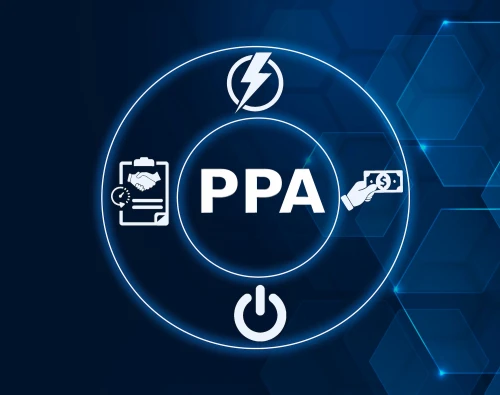
May 6th, 2025
Join our Italian Energy Day on 20 May – Book now
Hydropower is a cost-effective, reliable energy source that balances electricity markets, complements renewables, and plays a key role in shaping stable, green energy prices.

Hydropower, also known as hydroelectric power, is a renewable energy source that generates electricity by harnessing the energy of moving water. Typically, it includes dams, reservoirs, or run-of-river systems to harness the kinetic energy of flowing or stored water, converting it into electrical energy through turbines. Hydropower is one of the oldest and most widely used forms of renewable energy, providing a reliable and consistent power supply with minimal carbon emissions. Its ability to generate electricity on demand makes it a crucial component of modern energy systems. Let’s explore this in more detail.
Hydropower is a reliable source of electricity, offering consistent generation, particularly in areas with abundant water resources. Unlike fossil fuel-based power generation, hydroelectricity does not emit greenhouse gases during operation. As a stable energy source, it perfectly complements other renewable sources that may be more intermittent, such as wind and solar energy, which are dependent on weather conditions.
Overall, hydroelectricity is one of the most cost-effective forms of energy. The initial capital expenditure for hydroelectric projects is substantial, but once operational, they provide long-term cost savings, as operating costs are relatively low compared to those of non-renewable resources. Hydro dam electricity generation utilises water, a free and renewable resource, to produce electricity without the need for expensive fuel. This cost-efficiency translates into competitive regional electricity prices, benefiting consumers and businesses alike.
Hydropower plays a crucial role in balancing supply and demand within electricity markets. When demand is high, hydroelectric plants can increase output to stabilise prices. Conversely, during periods of low demand, hydropower generation can be scaled down to conserve water resources. This flexibility makes hydroelectricity a valuable asset in energy markets, helping to mitigate seasonal fluctuations in energy prices and ensuring grid stability.
Of course, the availability of water has a direct impact on hydropower production. Seasonal variations, such as droughts or heavy rainfall, can lead to shifts in electricity generation, which in turn influence energy costs. For example, during wet seasons, an abundance of water enables increased electricity generation, which could lower prices. Effective water resource management in energy production is crucial for mitigating these fluctuations.
While hydropower has clear advantages, its effectiveness depends on robust infrastructure. Transmission constraints, such as outdated power grids, can limit the distribution of hydroelectricity, resulting in regional disparities in energy prices. For example, remote hydroelectric plants require extensive transmission infrastructure to distribute power to urban and industrial centres. Bottlenecks in transmission capacity can lead to price disparities between regions, limiting the cost benefits of hydroelectricity in areas with inadequate grid connectivity.
Government intervention plays a significant role in shaping the economics of hydropower. Subsidies, tax incentives, and regulatory frameworks can either enhance or hinder the cost-effectiveness of hydroelectricity. Policies that encourage investment in hydropower infrastructure can lower energy prices by increasing supply and improving market competition. Additionally, carbon pricing and emissions trading schemes can further boost hydropower’s economic appeal by making fossil fuel alternatives more expensive.
Climate change introduces uncertainties in water resource management in energy production. Changes in precipitation patterns, increased evaporation rates, and glacial melt can alter river flows, impacting hydro dam electricity generation. Regions that depend heavily on hydropower must adapt to these changes to ensure long-term stability in energy prices. Investment in adaptive measures, such as improved reservoir management and climate-resilient infrastructure, will be crucial to maintaining hydropower’s role in the renewable energy market.
Pumped storage hydropower is a vital technology for stabilising energy prices. It allows excess electricity generated during low-demand periods to be stored as potential energy by pumping water to an elevated reservoir. When demand rises, the stored water is released to generate electricity. This capability makes pumped storage a crucial tool for balancing intermittent renewable energy sources, such as wind and solar, thereby reducing price volatility and enhancing energy security.
As global energy systems transition towards decarbonisation, hydropower is expected to play a central role. Its ability to provide consistent, low-carbon electricity makes it a key component of a sustainable energy mix. By reducing dependence on fossil fuels, hydropower contributes to lower energy costs and minimises exposure to fossil fuel price fluctuations. Furthermore, as carbon reduction targets become stricter, the economic advantages of hydropower in stabilising regional electricity prices will become more pronounced.
Hydropower’s ability to complement other renewable sources enhances its impact on energy markets. Solar and wind energy are intermittent, requiring backup power solutions. Hydropower, with its rapid response time and dispatchable nature, acts as an ideal partner to these renewables. By integrating hydropower with wind and solar energy, electricity markets can achieve greater price stability and reduce seasonal fluctuations in energy prices.
Hydropower’s integration with wind and solar energy strengthens the impact of the renewable energy market. Together, these sources create a diversified energy mix that ensures stability, mitigates seasonal fluctuations, and keeps electricity costs manageable.
Hydropower’s influence on regional energy prices is multifaceted. From its cost advantages to its adaptability to market demand, hydro dam electricity generation provides numerous benefits. However, challenges such as water availability, infrastructure constraints, and climate change must be addressed to optimise its impact.
By embracing advances in technology, fostering government support, and integrating hydropower with other renewables, regions can harness its full potential. Hydropower energy prices are more than a reflection of electricity costs - they represent a gateway to sustainable, stable, and decarbonised energy markets. As we move towards a greener future, hydropower stands as a vital pillar in achieving global energy goals.
Make better decisions with all the data you need to analyse European energy markets.

May 6th, 2025

May 5th, 2025

May 2nd, 2025